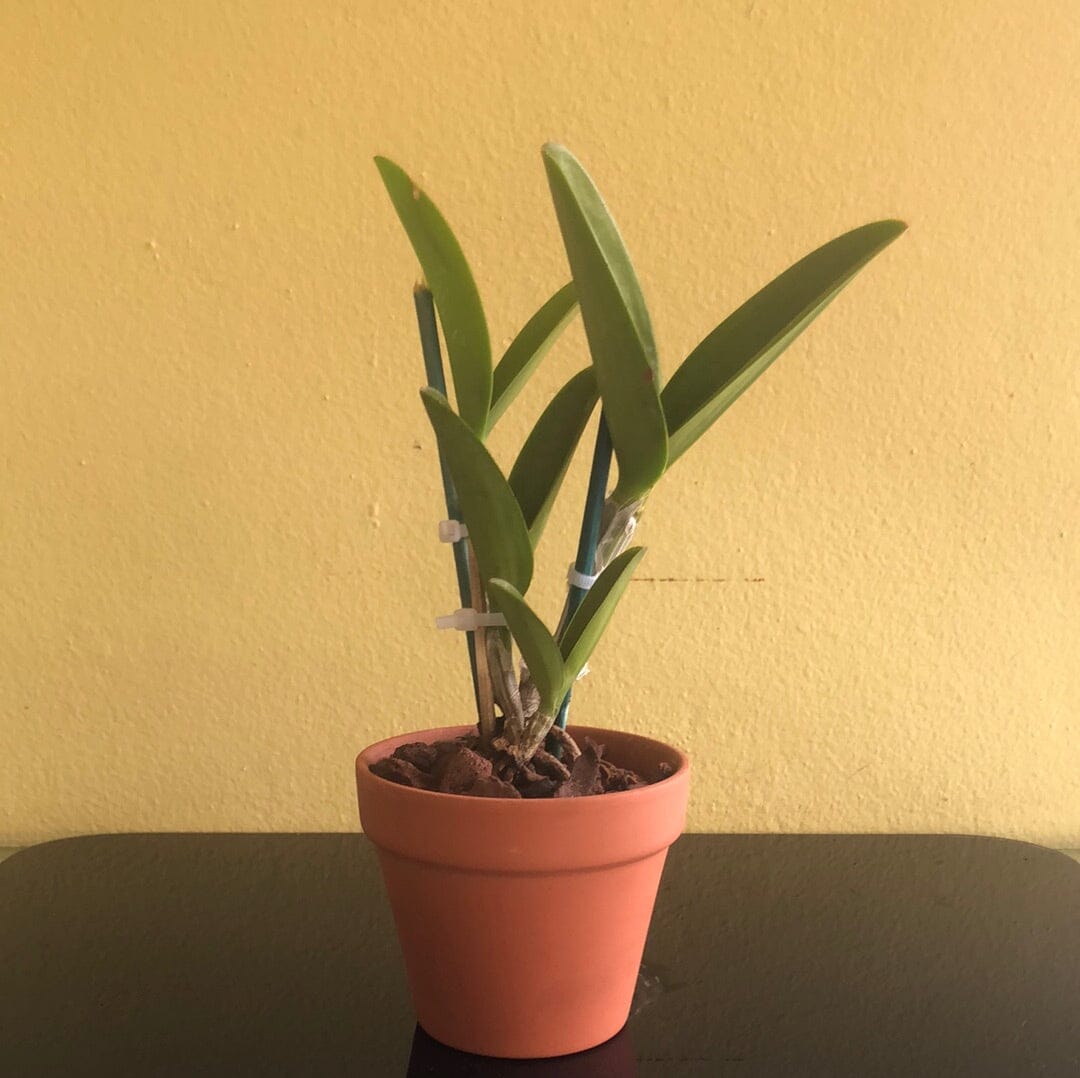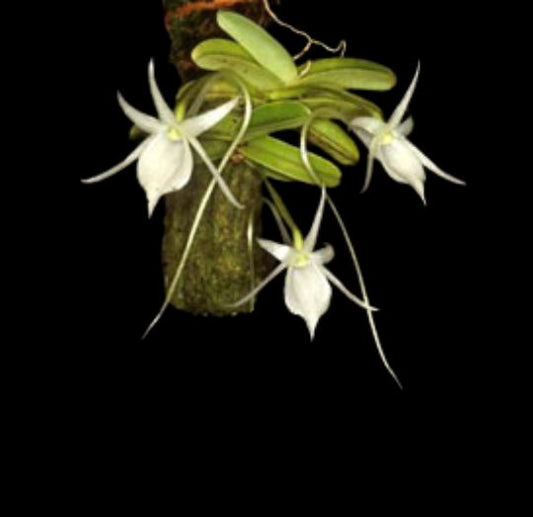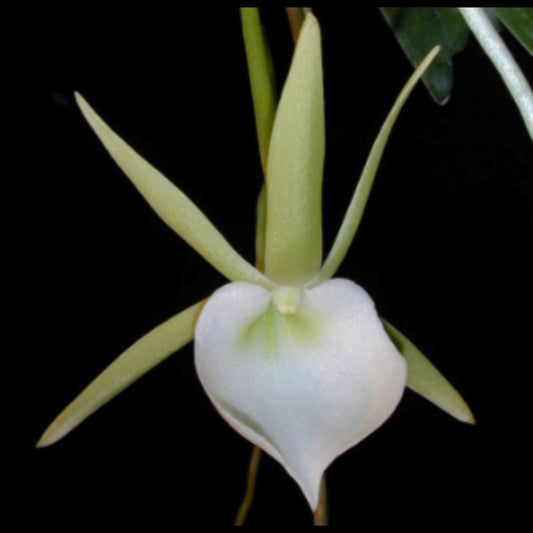La Foresta Orchids
Cattleya elongata
Cattleya elongata
No se pudo cargar la disponibilidad de retiro
Cattleya elongata is native to Brazil. It is found growing in Chapada da Diamantina in Bahia State and is commonly found in Serra do Sincora and in the northern region of Minas Gerais State in the Serra do Espinhaco at elevations of 900-1500 meters above sea level.
It is a large sized, warm to cool growing lithophytic species which reaching 17-75 cm in height with narrowly cylindrical, 8.5-58 cm long, purplish-green pseudobulbs that are covered with paleaceous sheaths. The leaves are 2, apical, narrowly elliptic, 5.5-18 x 2.1-6.7 cm, strongly leathery, margin entire.
Elongated Stalk Cattleya blooms in late summer on a terminal, 20 to 60 cm long, 2 to 10 flowered inflorescence. The flowers are fragrant, 8 cm in diameter and have a heavy texture and last for a long time; sepals and petals are reddish-brown in color and gleam like polished satin; lip conspicuously trilobed, with terminal lobe divided into two lobes, magenta and internally white; lateral lobes completely enveloping the column, magenta in the basal portion, white in the median and terminal portions; column white with base, lateral region and ventral face magenta.
Light:
Cattleya elongata needs a light level of 25000-35000 lux. Strong air movement should be ensured all the time, especially during flowering. In winter the light level should be the highest. If plants were previously grown in shadier conditions, the light level should be increased gradually. Rapid change can lead to very serious damage to the plant, and even to complete destruction by the sun. During growth periods, the leaves should have a medium green colour as this will indicate correct light levels.
Temperature:
In summer, the average day temperature is 25-28 °C, and the average night temperature is 15-18 °C, with a daily amplitude of 9-11 ° C. In winter, the average day temperature is 24-26 °C, and the average night temperature is 14-17 °C, with a daily amplitude of 9-11 ° C.
Humidity:
Elongated Stalk Cattleya needs the average humidity of 70-80% for most of the year, drop to 50-60% in winter. A light misting can be applied at morning and night to help to provide humidity if required when watering is not taking place. The plant like higher night time humidity, with lower daytime levels. Attention must be paid that too high humidity will spoil the flowers.
Substrate, growing media and repotting:
Cattleya elongata are usually grown in pots or baskets filled with a very thick, loose, quick-drying medium that allows the roots to dry quickly after watering. Rather smaller pots sufficient for 1-2 years of growth are recommended, because the substrate in larger pots remains wet after watering for too long. Rotting may be the result of insufficiently quick drying of the roots. Most growers recommend thick bark, though others prefer pieces of cork mixed with large lumps of charcoal.
Repotting or dividing the plants should be done only when the growth of new roots begins. This will allow the plant to take root in the shortest possible time and avoid weakness. If violated at the wrong time, many plant will stagnate and eventually perish. For the first few weeks after re-potting plants should be keep dryer than usual to help protect the roots, the exception is if there are new live root tips, the plant must be grown as normal. A light misting can be applied after re-potting to help the plants along. Broken roots will rot in the pot, so preventive trimming of any broken roots are strongly recommended.
Watering:
Elongated Stalk Cattleya should be abundantly watered during active growth, but the roots must always dry quickly after watering. This can easily be seen, especially in clear pots by checking the root colour. Greenish or slightly translucent means the roots are still wet, and white roots are dry. When new growths reach maturity in the autumn, the amount of water should be reduced. The flower buds are susceptible to fungal infections if the plant is kept too wet before flowering.
Fertilizer:
The plants should be fertilized every week 1/4-1/2 of the recommended dose of fertilizer for orchids. A fertilizer with a high nitrogen content is beneficial from spring to mid-summer, and a fertilizer richer in phosphorus should be used in late summer and autumn.
Rest period:
Cattleya elongata should be given a drier rest as new growths mature. In winter, when not in active growth, the plant need less water but should not be dry for long periods. Fertilization should be reduced until watering is increased in spring, especially for plants grown in the darker, short-day conditions typical of higher latitudes.
This is a blooming size division in a 4" clay pot, newly repotted, could be shipped bare root. Grown from Seed! Limited




























